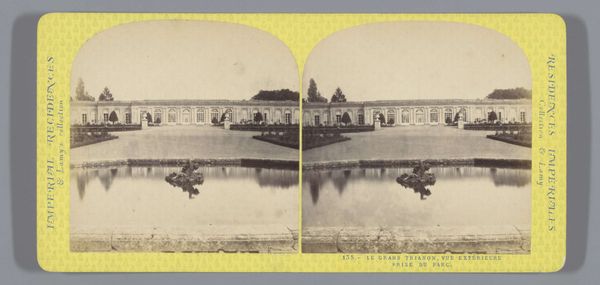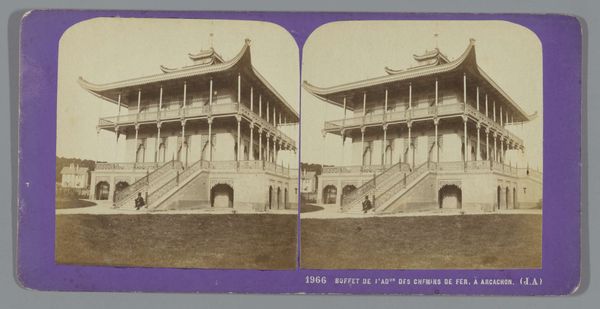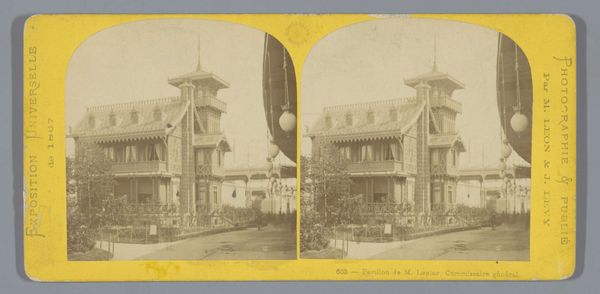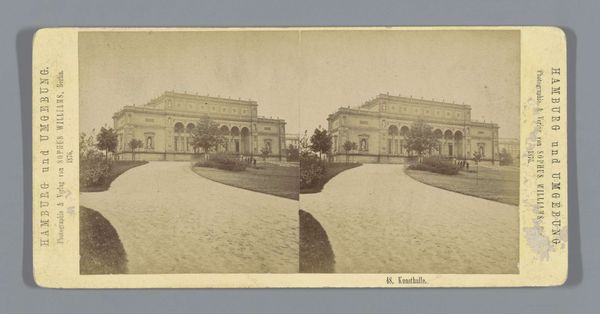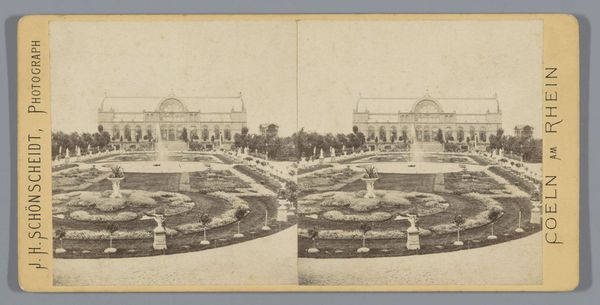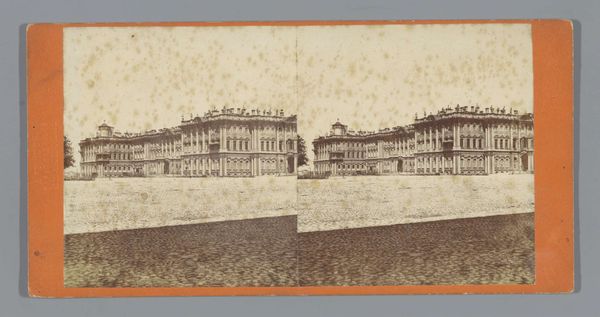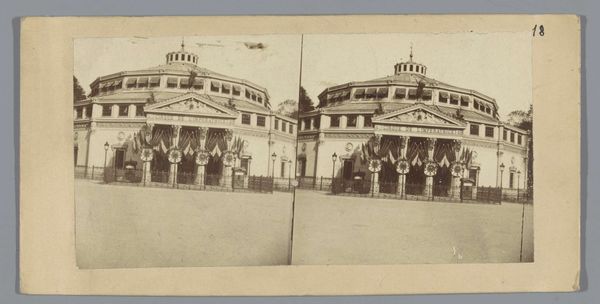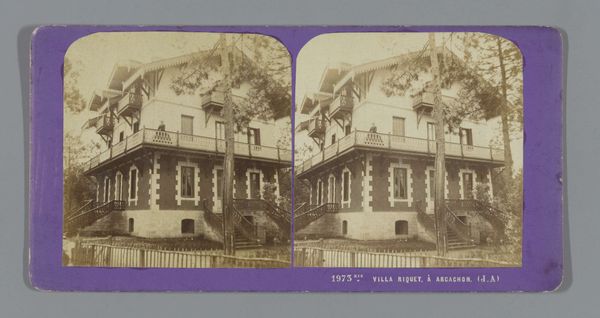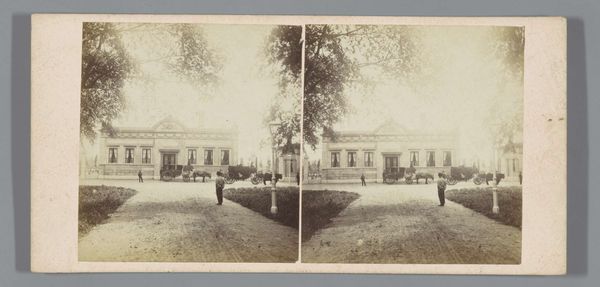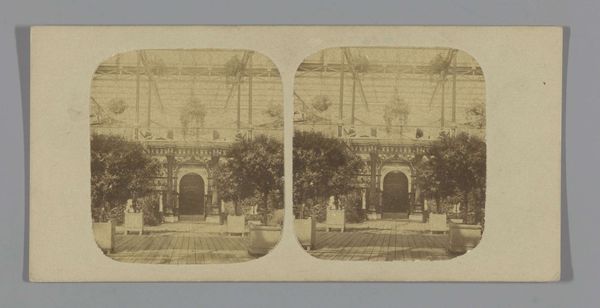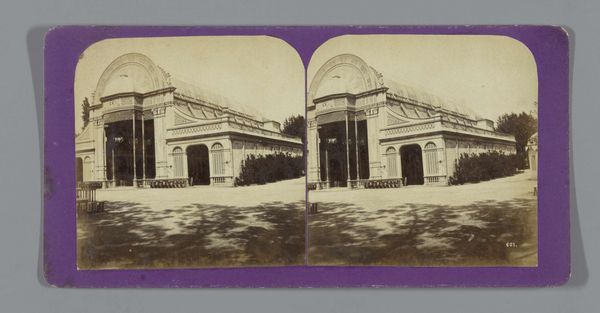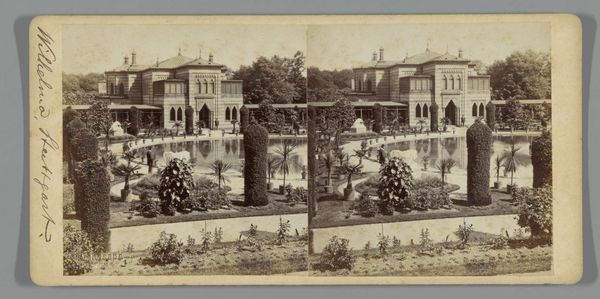
print, photography, architecture
# print
#
landscape
#
photography
#
orientalism
#
architecture
Dimensions: height 85 mm, width 170 mm
Copyright: Rijks Museum: Open Domain
Curator: It's captivating how this architectural subject appears to float in this stereo photograph. There’s an ethereal quality that contradicts the weight and solidity of the building itself. Editor: Indeed. The work is "Exterior of the Casino Mauresque in Arcachon", an albumen print created sometime between 1862 and 1876 by Jean Andrieu. What strikes me most is the blatant act of cultural appropriation inherent in this architectural design and subsequently amplified in its photographic representation. Curator: Can you elaborate? The composition is strikingly symmetrical, with a visual harmony that transcends cultural considerations. I am really struck by how the architect makes such powerful use of symmetry here to generate order and equilibrium. Editor: Well, consider the Orientalist style employed here. This wasn't just about aesthetic appreciation; it involved appropriating and exoticizing non-European cultures for European consumption and delight. This structure becomes a symbol of power, a physical manifestation of colonial fantasies. Who was the Casino for and what purpose? We have to also ask ourselves: whose gaze is privileged? Curator: It certainly presents a Eurocentric interpretation. Though, if we consider photography as a burgeoning medium at that time, perhaps we can explore its technological role and artistic ambition. The photographer's meticulous focus allows light and shadow to reveal texture, creating an undeniable depth within the constraints of monochrome. Editor: It's impossible to separate technology from the ideologies that shaped its application. These visual tropes shaped popular understanding. The consumption of architectural exotica in this image participates in, and reinforces the asymmetrical power dynamics within globalized imperial projects. Curator: While I acknowledge the critique, might we also consider the possibility of genuine artistic fascination? Is it not possible the intent was to find beauty and commonalities across cultures through architectural translation? Editor: We cannot divorce this image from the colonial structures. But looking closely is what art can teach us to question the image itself, and what historical narratives created the building and this particular rendering of its existence. Curator: A potent reminder that the aesthetics are always enmeshed in wider considerations. Editor: Indeed. Art, after all, encourages this precise reflection.
Comments
No comments
Be the first to comment and join the conversation on the ultimate creative platform.
